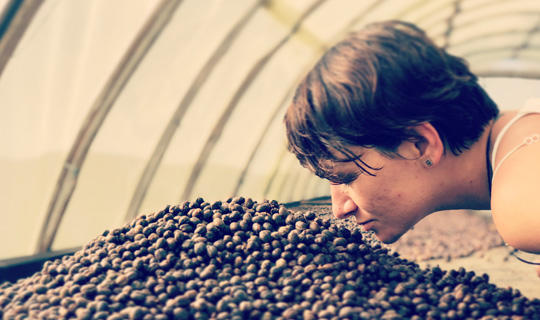WASHED
Washed coffee refers to a method of processing coffee beans. After coffee cherries are picked, the flesh of the cherry is removed, and the beans are left with a sticky, sugary layer called mucilage. In the washed process, this mucilage is then washed off with water. This typically happens in fermentation tanks where the mucilage is broken down by natural enzymes, and then the beans are rinsed. This method highlights the coffee’s own characteristics and tends to produce a cleaner, brighter, and more acidic flavor compared to other methods like natural or honey processing. It’s a popular method in many countries that have access to plenty of water. How do you like your coffee, by the way? Do you have a favorite type?
HONEY
The honey process in coffee is an interesting middle ground between the washed and natural methods. After the coffee cherries are picked, the skin is removed, but some of the mucilage, that sticky, sweet layer, is left on the beans. Then, they’re dried like this, which gives the coffee a sweeter, more syrupy taste compared to washed coffees. It’s called ‘honey’ because of the mucilage’s sweetness and because it can make the beans look a bit like they’re coated in honey. The flavor can vary a lot, depending on how much mucilage is left and how it’s dried. It’s a technique that’s becoming more popular for its unique flavor profiles. What’s your take on trying different coffee processing methods?
NATURAL
Natural process coffee is all about drying coffee cherries in the sun with the beans still inside them. It’s one of the oldest methods around. The cherries are spread out on large surfaces to dry, and this can take weeks. As they dry, the beans inside absorb sweet and fruity flavors from the cherry. This method often leads to a fuller body and a sweeter, more complex cup of coffee that can have wine-like or berry flavors. It’s pretty popular in regions with less water, since it doesn’t require much to process. The natural process can result in really distinctive and exotic flavors that you might not find in washed or honey-processed coffees. Have you ever tried coffee made from naturally processed beans?
CULTURING
„Culturing Fermentation in Coffee Processing”
The journey of flavor enhancement in coffee begins with the picking of the cherry, initiating a metabolic process within the seed as it gears up for germination. The temperature and the fluids within the cherry naturally increase due to the energy requirements of the embryonic seed.
Leveraging this natural process, the cherries are placed in a controlled environment for 10 to 12 hours, which allows the temperature to rise. Beneficial bacteria start converting carbohydrates into sugars, thus further increasing the temperature, which is essential for the next step of anaerobic fermentation.
This careful process ensures that the seeds remain highly active, making them more receptive to the anaerobic conditions that will follow. After fermentation, the coffee is quickly cooled in a water tank set at 8-10 degrees Celsius to stop the fermentation. Subsequently, the beans are depulped.
Depending on the desired flavor outcome, specific fruits are prepared alongside the pulping of the coffee. These fruits are crushed and combined with the coffee to create a distinct fermentation profile.
At this point, specific yeasts and bacteria are introduced to activate fermentation, with the choice of cultures influencing the final taste profile. The coffee is allowed to ferment for 6 to 8 days before being thoroughly washed. The beans are then sun-dried for 15-20 days, taking care to maintain a thin parchment layer to prevent fungal infections and to lose moisture evenly.
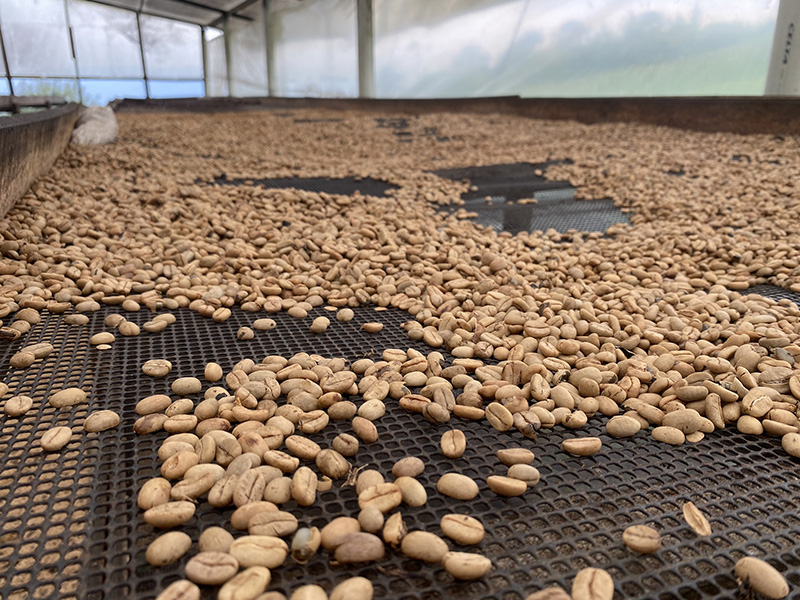
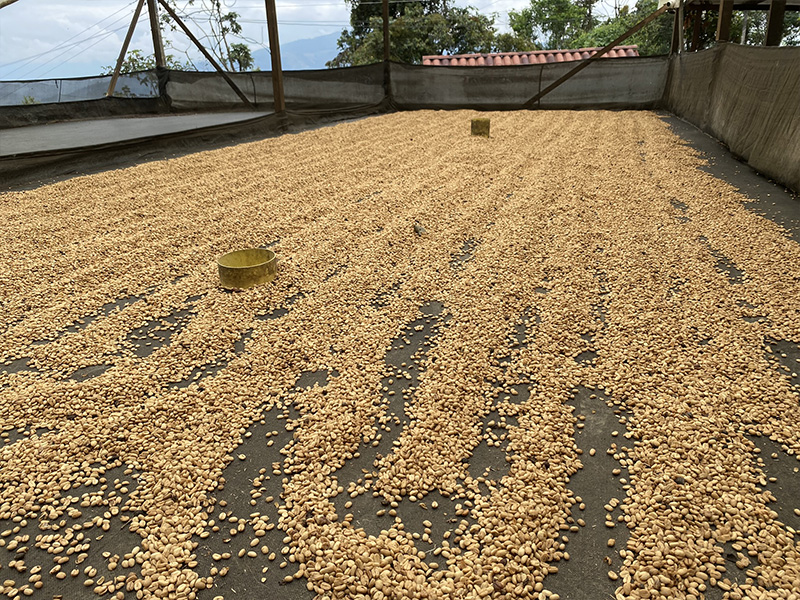
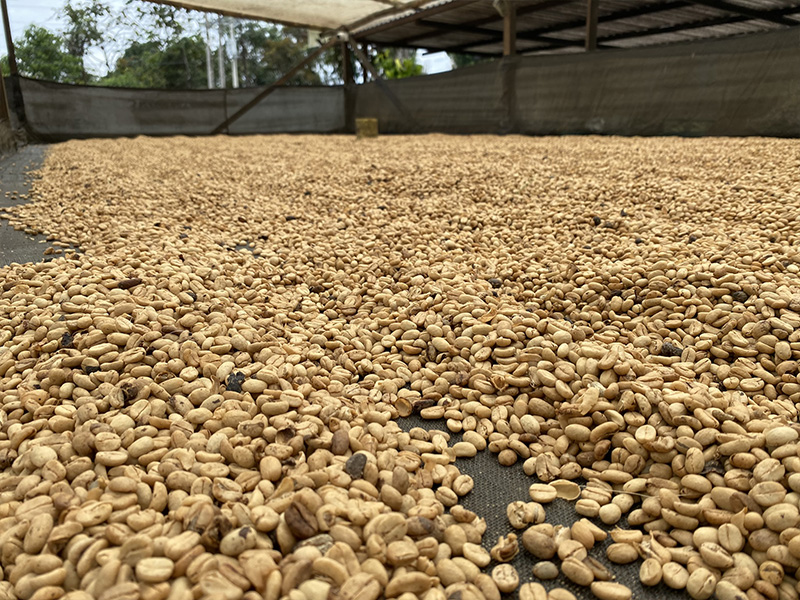
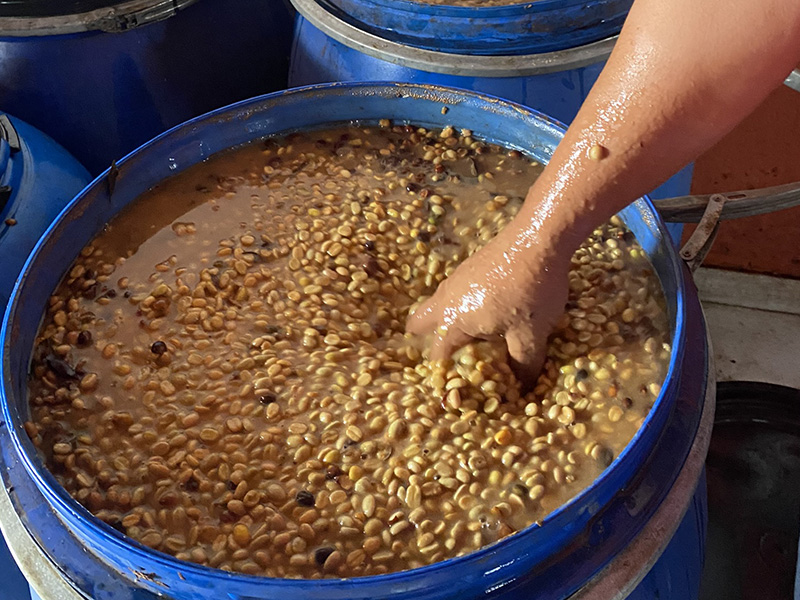
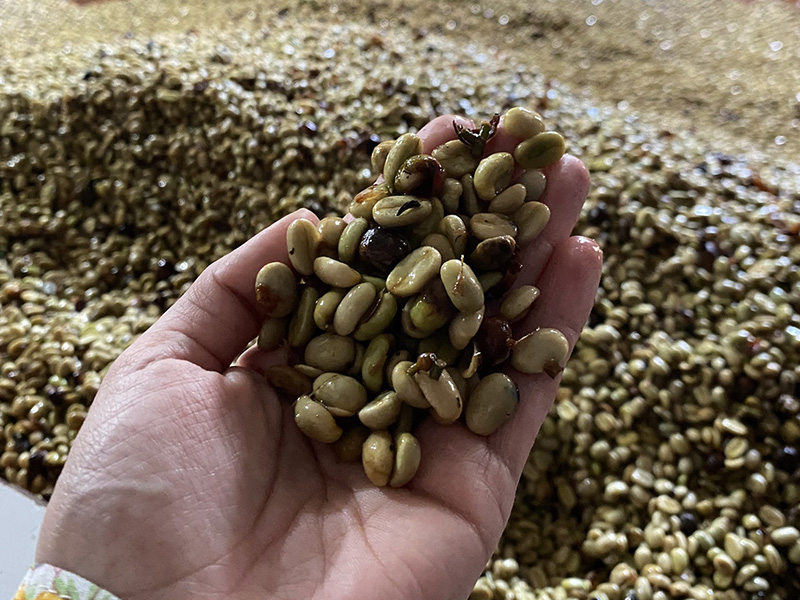
The final stage involves a stabilization process where the dried coffee parchment is stored in bags for a period of 30 days. This critical phase ensures the unique flavor profiles are preserved, resulting in a coffee with distinct and nuanced taste characteristics.
This method is a sophisticated blend of age-old practices and modern innovation, aiming to produce a uniquely flavorful coffee experience.
definitely this is a process that you want to try!



